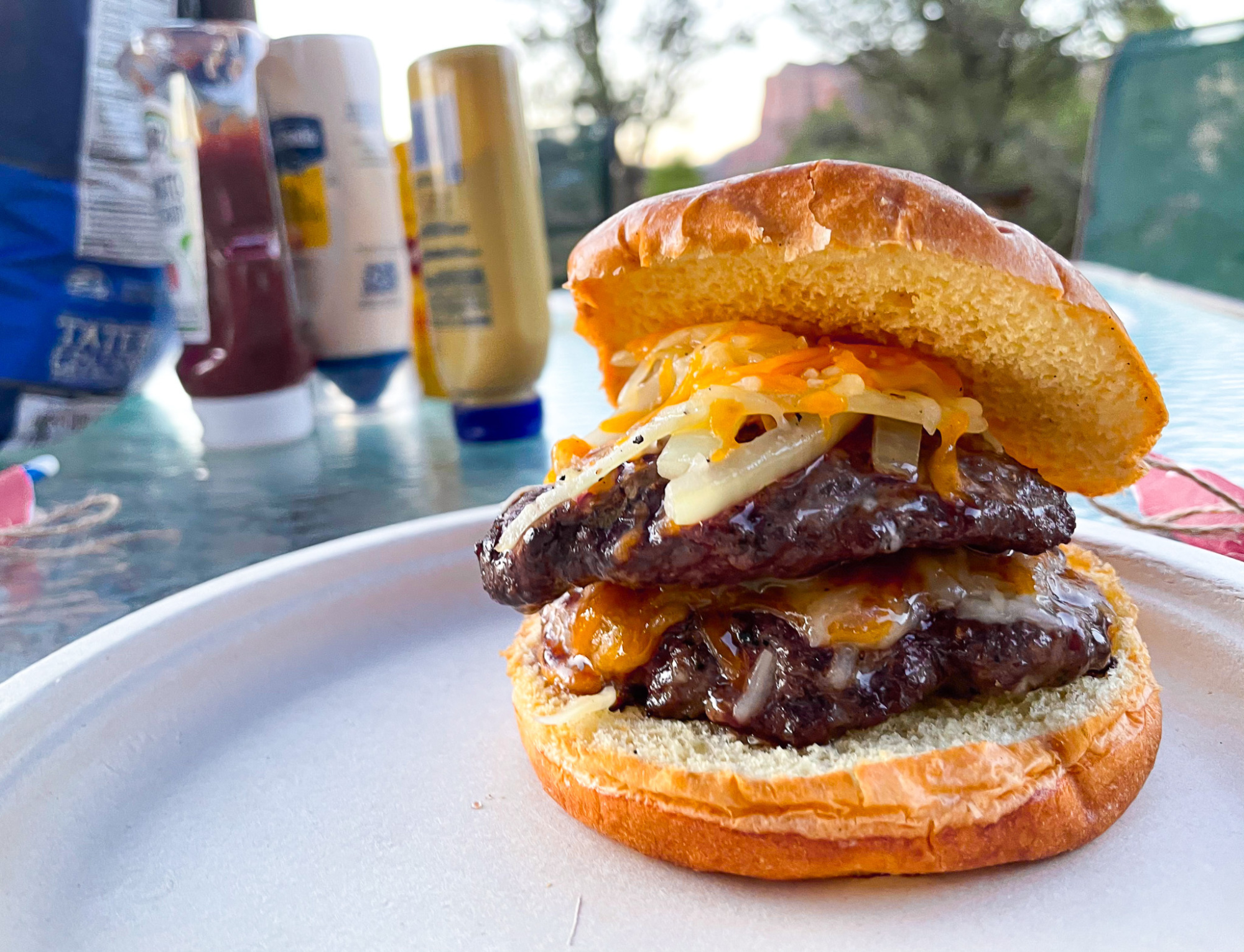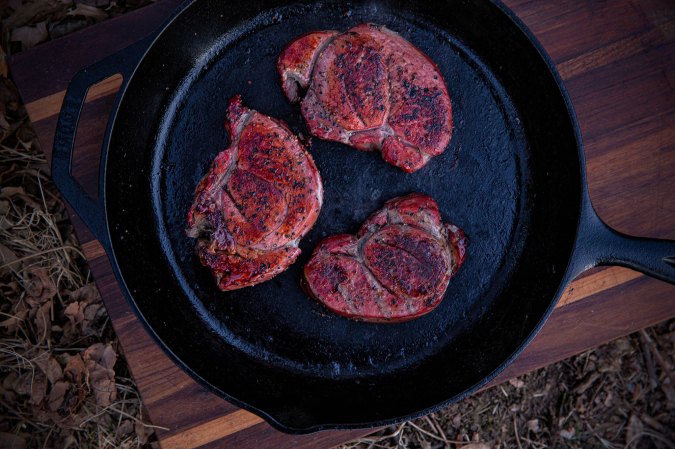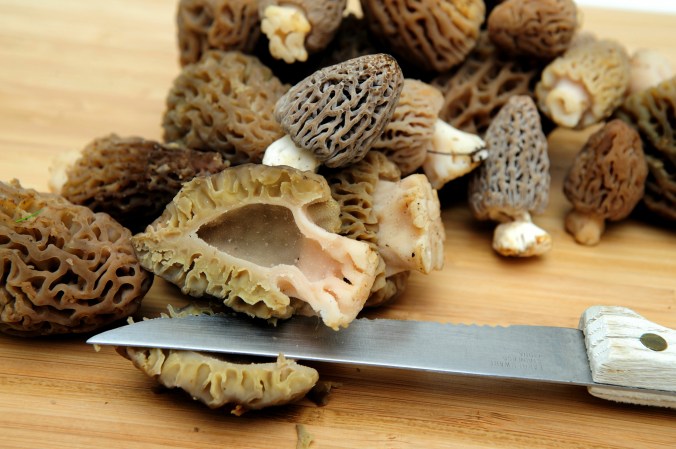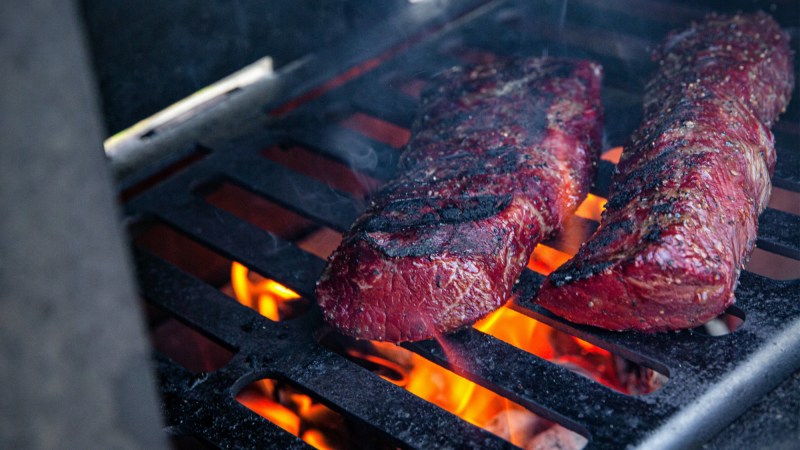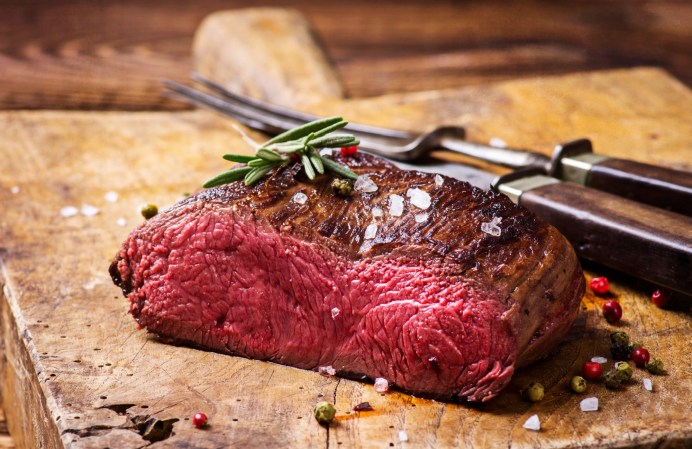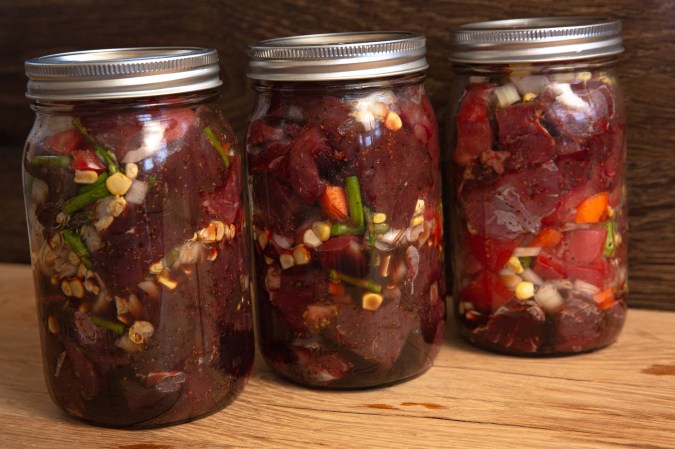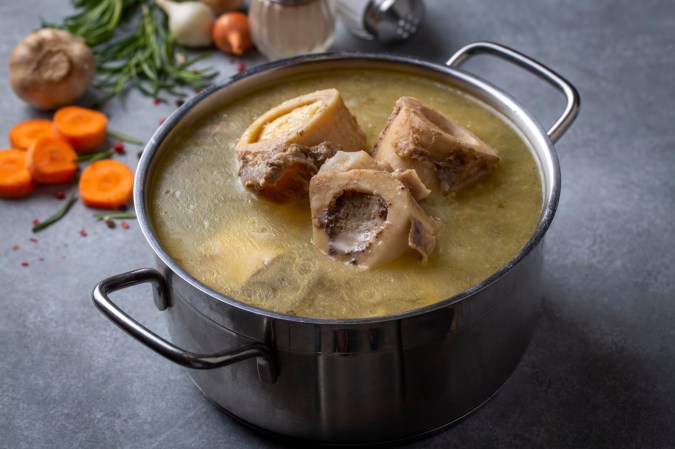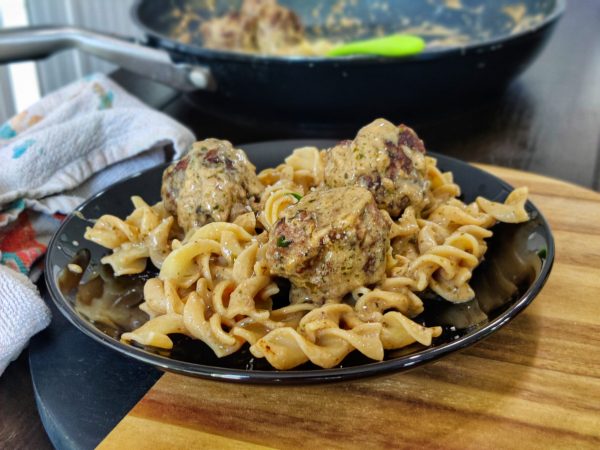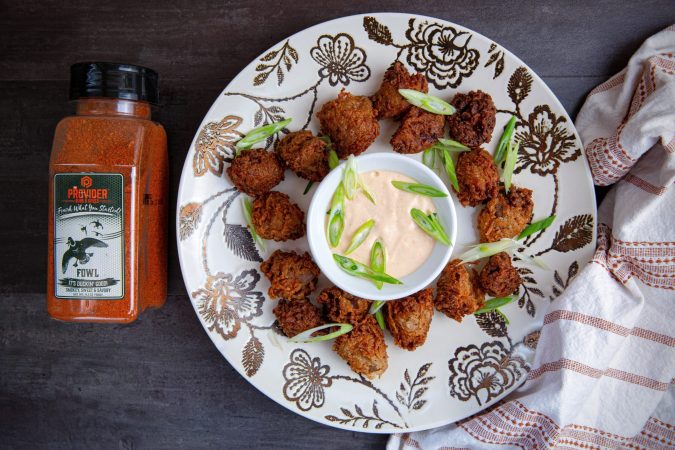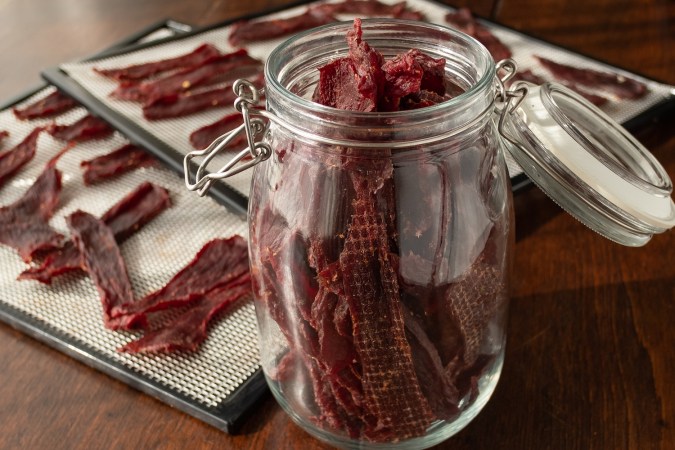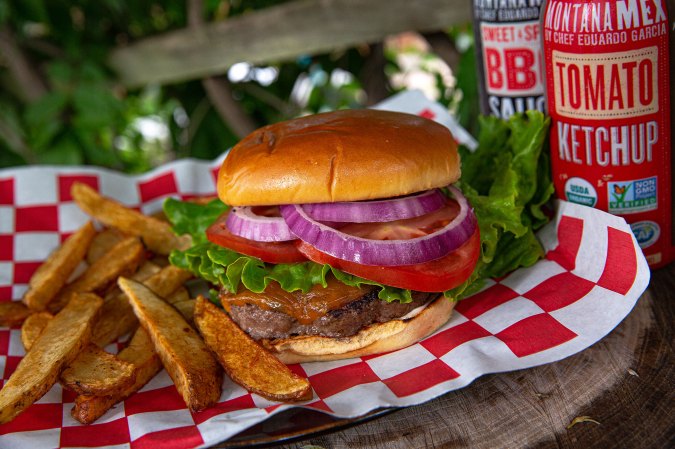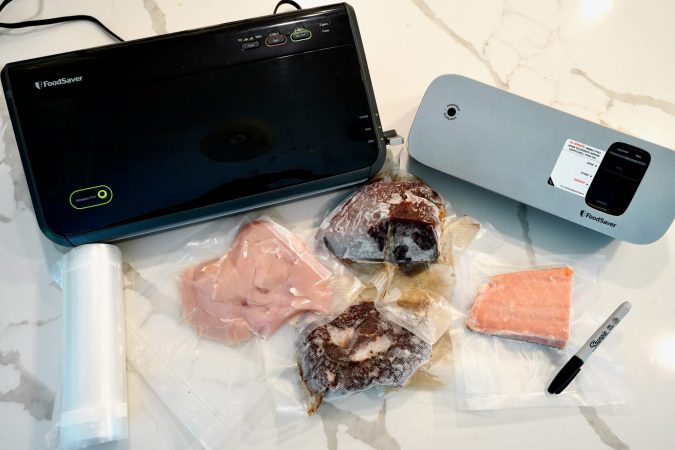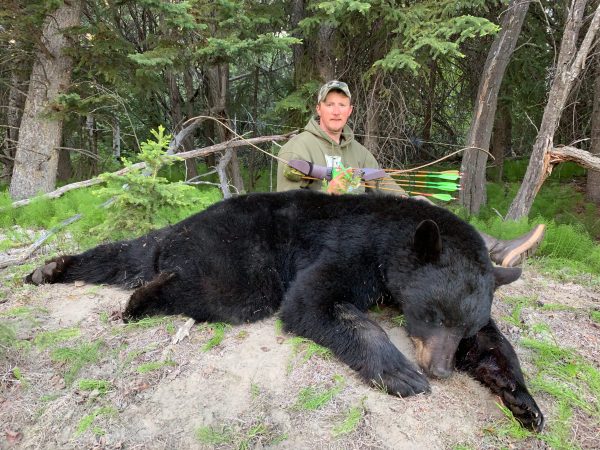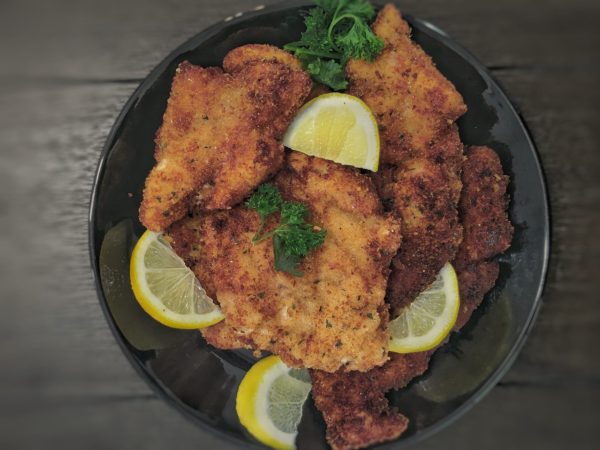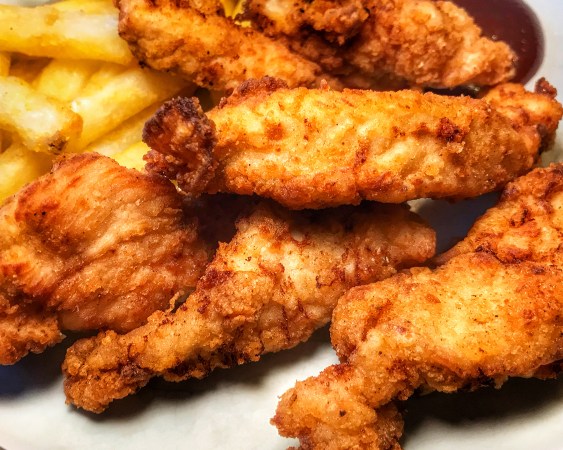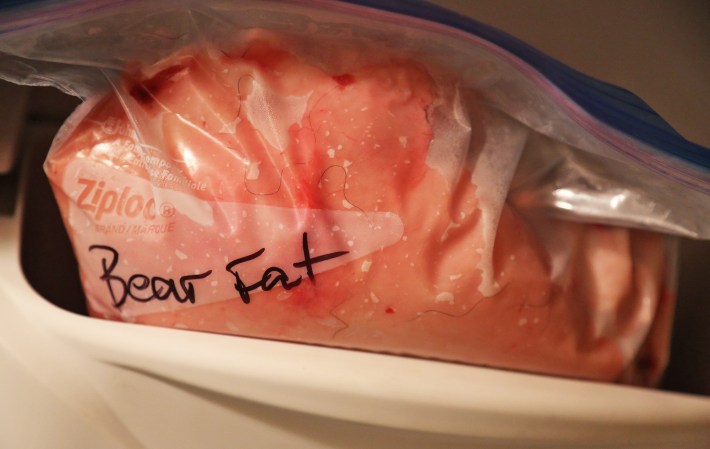Venison recipes aren’t hard to find. But good venison recipes…now, that’s a different story. The internet is flooded with thousands of recipes for everything from meatloaf to carpaccio. You have to weed out all the “experts” who tell you to soak the meat in milk, or cook it to medium-well, or spend $75 at the fancy grocery store on spice blends and herbs you’ve never heard of. We waded through the nonsense for you and compiled some of the best venison recipes from some of the industry’s most reliable professional chefs and wild game foodies, as well as a handful of diehard hunters. This might be a good time to start defrosting the hunk of venison at the top of your freezer.
Table of Contents
Hank Shaw’s Venison Greek Meatball Recipe
Sean Sherman’s Venison Stew with Hominy
Lance Lewis’ Tuscan Venison Neck/Shank with White Bean Ragu
Maggie Hudlow’s Venison Carne Asada
Michael Pendley’s Venison Tenderloin Milanese
Wade Truong’s Sous Vide Herb-Crusted Venison Chops
Jenny Nguyen-Wheatley’s Vietnamese Shaking Venison
Beka Garris’ French Onion Venison Steaks
Derek Horner’s Shredded Venison Blade Roast
Katie Hill’s Harissa Lime Marinade
Cosmo Genova’s Venison Ragout
Natalie Krebs’ Perfect Venison Burgers
More Venison Recipes We Love
Venison Recipe FAQs
Venison Recipes from Professional Chefs
These folks are trained experts. They’ve either been through culinary school or they’ve worked extensively in restaurants. But when given the choice, they’d take a hunter-harvested venison tenderloin over a marbled ribeye any day of the week, especially if it’s one they tagged themselves.
Hank Shaw’s Venison Greek Meatball Recipe
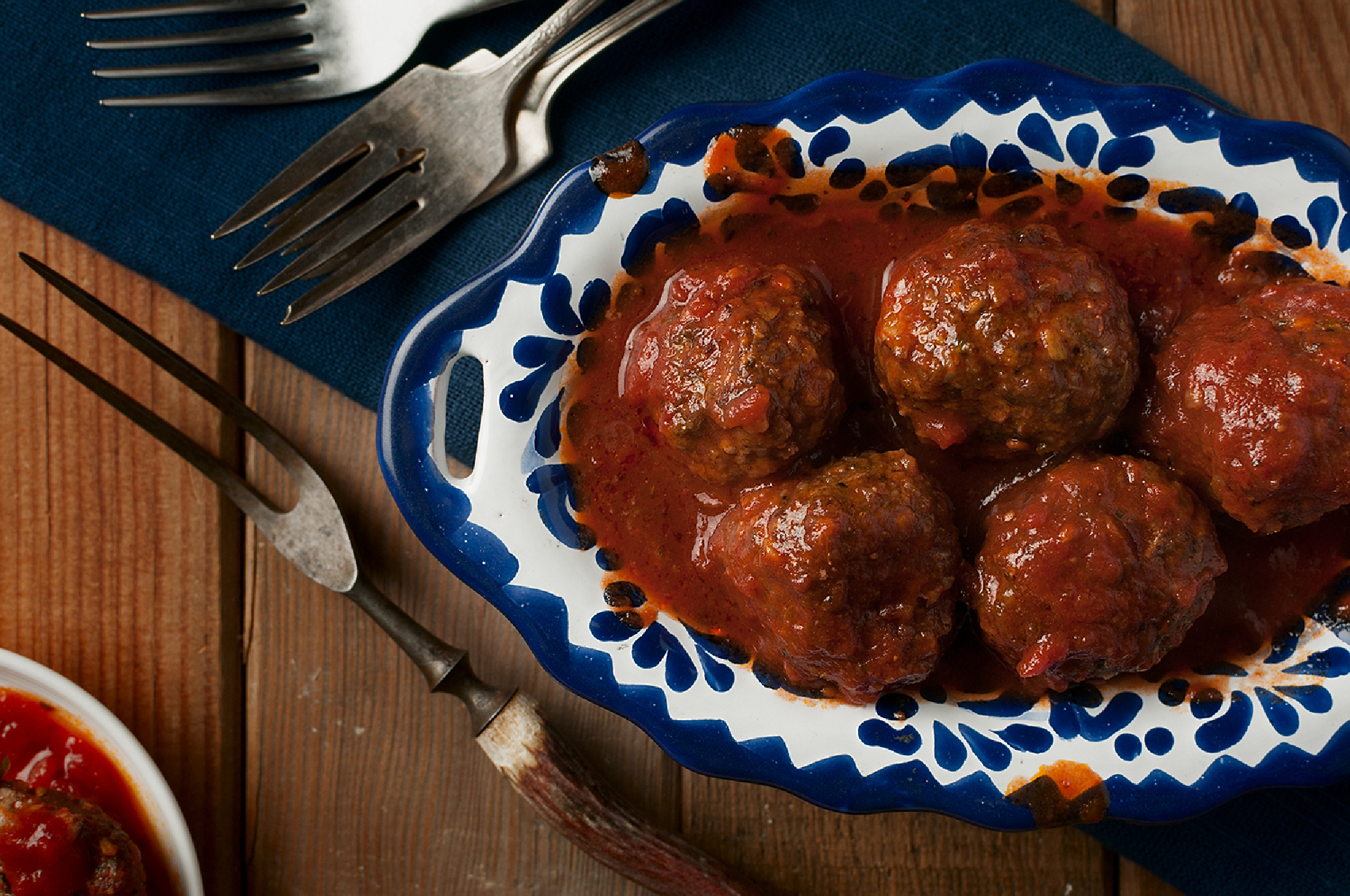
This recipe comes from James Beard award-winning wild game chef, multi-cookbook author, food writer, and avid hunter-angler-forager Hank Shaw. Shaw’s Greek meatball recipe calls for bulgur wheat instead of breadcrumbs, lots of garlic and fresh herbs, and tomato sauce with a “Hellenic touch.” These twists make these meatballs a little different from a more standard venison meatball recipe. Shaw’s Greek meatballs originally appeared in his blog, Hunt Gather Cook.
Ingredients
Meatballs
- 1 1/2 pounds ground venison
- 1/2 cup bulgur wheat
- 1/2 cup red onion, minced
- 5 cloves garlic, minced
- 1/4 cup minced parsley
- 2 tablespoons minced fresh oregano
- 1 tablespoon salt
- 1 tablespoon fresh ground pepper
- 1 egg, lightly beaten
- 1/2 teaspoon nutmeg, grated
- Olive oil for frying, about 1 cup
Greek Tomato Sauce
- 1 28-ounce can crushed tomatoes
- 2 tablespoons tomato paste
- 1/2 minced onion
- 1 can anchovies in olive oil
- 1/2 cup sweet red wine, Port or Mavrodaphne
- 1 cinnamon stick
- 1 tablespoon dried oregano, crushed
- Salt to taste
Instructions
- Start by getting the meatball mixture ready. Mix all ingredients in a large bowl. Cover and refrigerate for at least an hour to let the bulgur absorb moisture. Two hours is better.
- To make the sauce, drain the olive oil from the anchovies into a large saute pan. Over medium-high heat, saute the onions until they are translucent, about 3 to 5 minutes. Add anchovies, mash in the pan and combine with the onions. Add the tomato paste and stir to combine. Cook this until it turns a deep maroon, about 4 minutes.
- Add the wine and stir to combine. Add the cinnamon stick and bring to a boil. Pour in the crushed tomatoes, combine well and add the oregano and salt. Cook this uncovered over medium-low heat for about 10 minutes. Stir occasionally. If you feel adventurous, run this sauce through a food mill on a medium setting – after you remove the cinnamon stick. Keep warm while you make the meatballs.
- To make the meatballs, take the meat out and knead it until it forms a cohesive mass. Take an ice cream scoop or tablespoon and make your meatballs.
- Heat the olive oil in a large saute pan over medium-high heat. Brown the meatballs well in batches so you don’t crowd the pan. Set each browned meatball in the sauce to simmer as they come ready. When they are all in, cover the sauce and simmer gently over low heat for 15 minutes before serving.
Sean Sherman’s Venison Stew with Hominy
Sean Sherman is an Oglala Lakota chef, known more widely as “The Sioux Chef,” who focuses on amplifying and revitalizing Indigenous foods and culinary traditions. Sherman’s Minneapolis restaurant, Owamni, won a James Beard Award for Best New Restaurant in 2022. (The above Instagram post is of a bison stew with hominy from the famed restaurant.) Sherman also won a James Beard award for Best American Cookbook in 2018 for The Sioux Chef’s Indigenous Kitchen, where this recipe for venison stew with hominy originally appeared.
Ingredients
- 1 4-pound venison or elk shoulder
- Pinch smoked salt
- Pinch crushed juniper
- 2 tablespoons sunflower oil
- 2 wild onions or small shallots, diced
- 1 pound wild mushrooms (chanterelle, oyster, porcini, or cremini), sliced
- 1/4 cup corn flour
- 3 cups corn stock or vegetable stock
- 1 cup cider, hard or not sweet
- 1 sprig sage
- 1-2 tablespoons maple vinegar to taste
- Dash maple sugar
Instructions
- Generously season all sides of the venison with the salt and juniper. Film a cast-iron pot with the oil and set over high heat. Add the venison and sear well on all sides until golden brown, about 4 minutes per side. Remove the venison and set aside.
- Reduce the heat and add the onions and mushrooms to the pot and cook, stirring until they brown, about 3 to 4 minutes. Stir in the flour until dissolved; then stir in the stock, cider, and sage and bring the mixture to a boil. Reduce the heat to a low simmer. Cover and cook until the meat pulls away easily from the bone, about 1. to 2 hours. Taste and season with the vinegar and sugar.
- Transfer the venison to a cutting board and remove the bone. Slice the meat into chunks and return to the pot. Discard the sprig of sage. Serve in shallow bowls over wild rice, corn cakes, hominy, or roasted squash.
From The Sioux Chef’s Indigenous Kitchen by Sean Sherman with Beth Dooley. Published by the University of Minnesota Press, 2017.Copyright 2017 Ghost Dancer, LLC. All rights reserved. Used by permission.
Lance Lewis’ Tuscan Venison Neck/Shank with White Bean Ragu
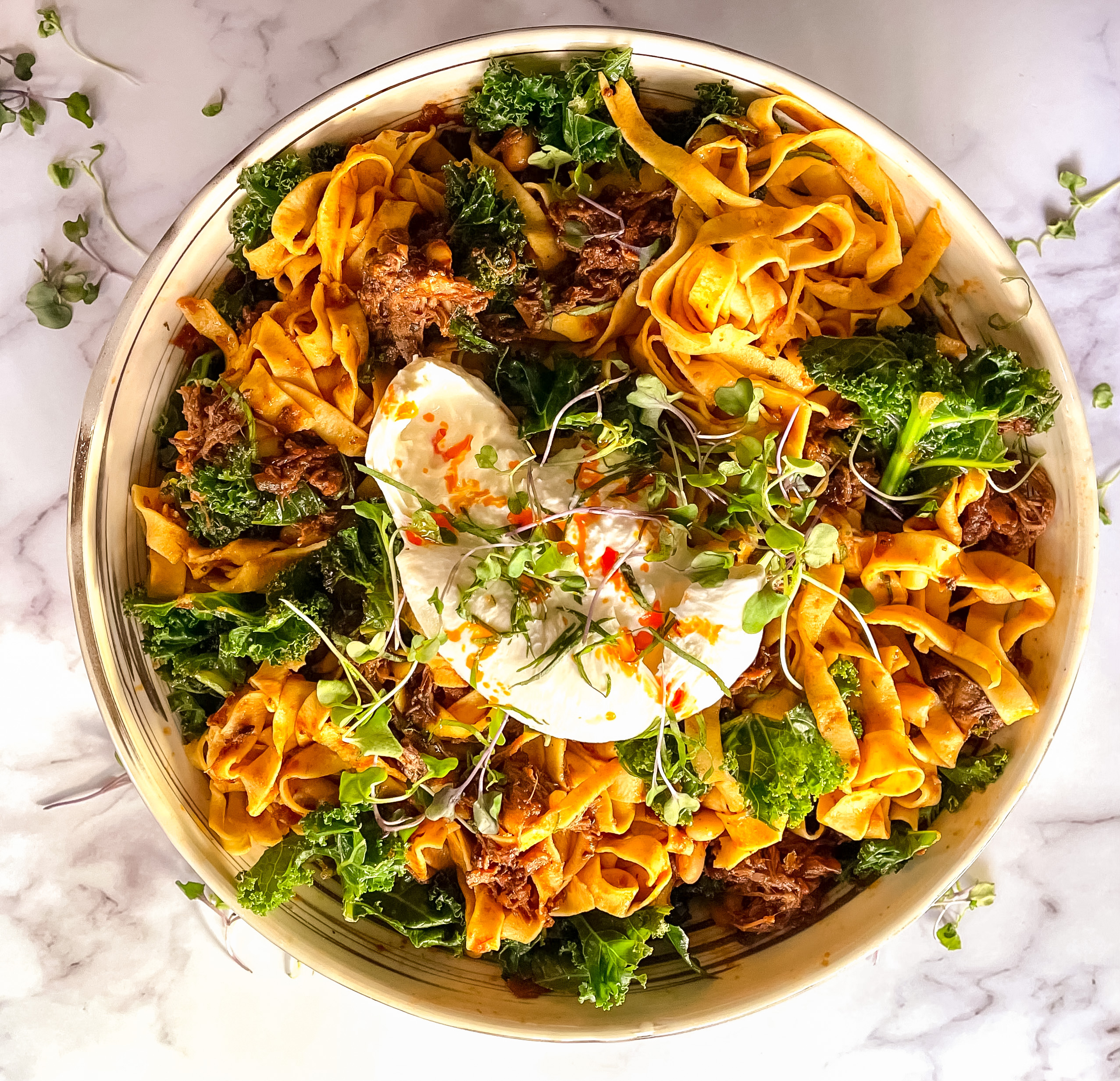
Private chef, caterer, and culinary instructor Lance Lewis is the founder of Tagged Out Kitchen, a wild game culinary class program that teaches participants everything from shot placement to best sausage-making practices. Lewis also offers field-to-table dinners and private instruction through TOK. He has a passion for using under-utilized cuts in high-quality recipes, as he does here with a neck and shank meat recipe.
Ingredients
- 2 tablespoons high temp neutral oil (avocado, canola, vegetable)
- 2 (28-oz.) cans San Marzano crushed tomatoes
- 2 yellow onions, small diced
- 2 carrots, small diced
- 2 stalks celery, small diced
- 4 garlic cloves, minced or grated
- 1/2 cup oil-packed sun-dried tomatoes, drained and chopped
- 2 tablespoons tomato paste
- 3/4 cup red wine
- 2 teaspoons dried basil
- 2 teaspoons dried oregano
- 2 sprigs fresh thyme
- 1 bay leaf
- 1 teaspoon kosher salt, plus more as needed
- 1/2 teaspoon freshly ground pepper, plus more for garnish
- 3 to 4 lbs venison neck/shank
- 1 bunch Tuscan kale, stemmed and leaves coarsely chopped
- 1 (14-oz.) can white beans, drained and rinsed
- 1 pound pappardelle or your favorite pasta
- 2 tablespoons salted butter
- Handful of fresh basil, chopped, plus more for garnish
Instructions
- Preheat the oven to 300 degrees.
- In an 8-quart Dutch oven, heat the oil until it shimmers and ripples. Next, add the venison and sear it on all sides until nicely browned. Once the venison is browned, remove it from the heat and set it aside. In the remaining oil (add more if necessary), add the diced carrot, onion, and celery. As they begin to soften, push them to the side of the pot and introduce the tomato paste. Let the tomato paste develop a deep color on the bottom of the pot while stirring, then pour in the red wine. Utilize a wooden spoon or a high-temperature spatula to scrape up any bits stuck to the pot’s bottom.
- Now, incorporate the rest of the ingredients except for the pasta, kale, and beans. Mix everything well, and reintroduce the seared venison along with any juices that may have accumulated on your plate. Transfer the Dutch oven to a preheated 300-degree Fahrenheit oven until the venison becomes incredibly tender and falls off the bone, which usually takes about 4 to 6 hours. This will ensure the desired tenderness and prevent any sticking. Afterward, remove the venison from the sauce (into a bowl or plate), allowing it to cool slightly, and then proceed to shred the meat while discarding the bones.
- Integrate the kale and white beans into the sauce, put back on the stove turning the heat up to high, and cover the pot for an additional 20 to 30 minutes of cooking. Finally, stir in the shredded venison meat.
- Meanwhile, prepare a large pot of salted water and bring it to a boil over high heat. Cook the pasta until it reaches an al dente texture according to the package instructions. Drain the pasta and return it to the pot. Toss the pasta with butter and fresh basil.
- Serve the sauce over the prepared pasta, and garnish with additional basil and a sprinkle of freshly ground pepper to taste.
- Note: Feel free and add in your favorite cheese like burrata or spice it up with calabrian chili oil.
Venison Recipes from Wild Game Foodies
These folks have all the enthusiasm and creativity necessary to stand out among run-of-the-mill wild game cooks. They publish recipes on their own websites and in other outlets, and maybe they’ve written a cookbook or two. They’re the middle sliver of the Venn diagram between culinary professionals and normal hunters who like to cook.
Maggie Hudlow’s Venison Carne Asada Recipe
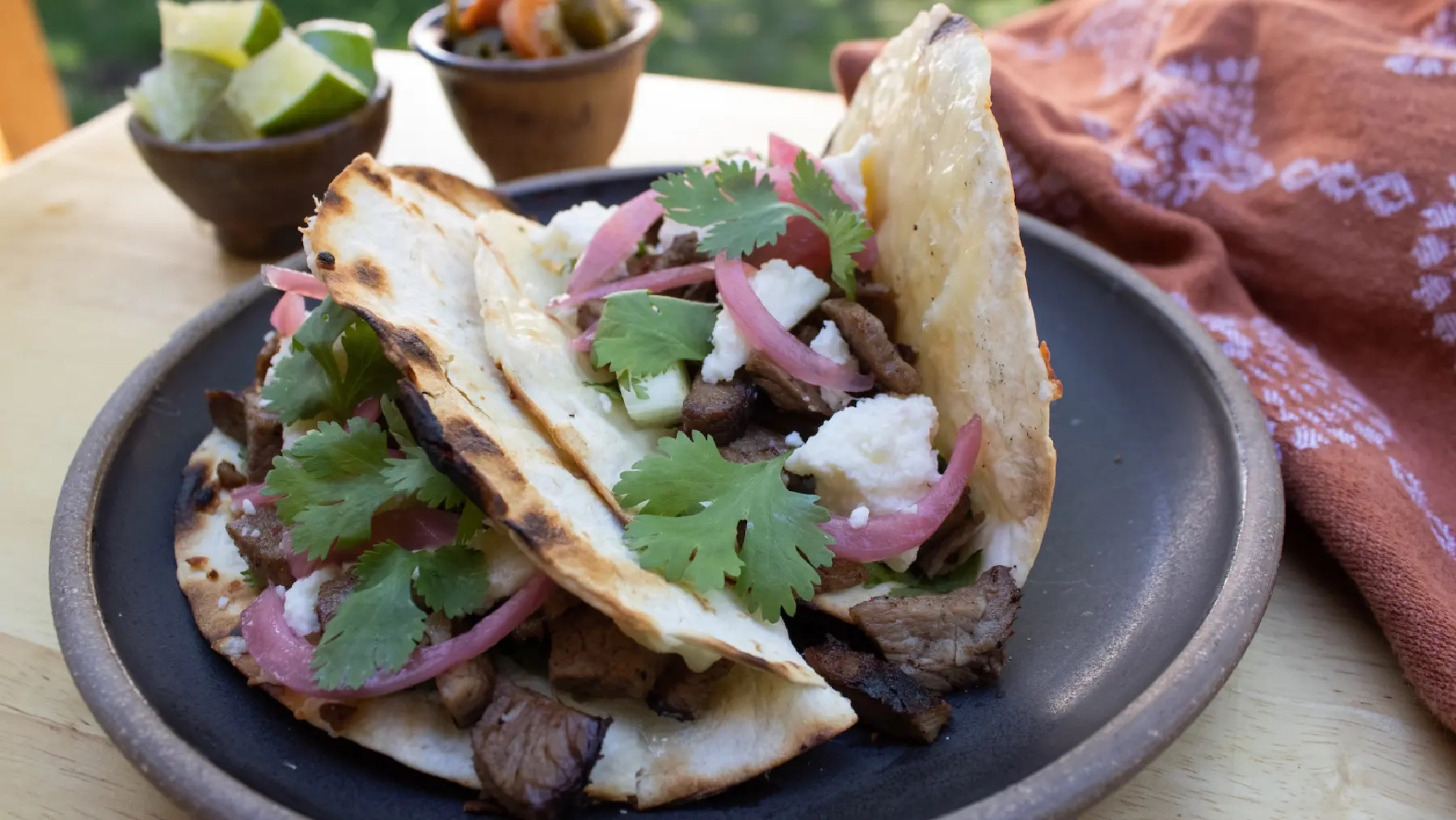
Between her culinary school experience, her stints working in restaurants around Wyoming and Montana, and now her job at MeatEater, Maggie Hudlow blurs the line between professional and foodie. She shows it with her latest for MeatEater, this venison carne asada recipe, which is simple enough to whip up in an afternoon but delicious enough to serve to your pickiest taco fans.
Ingredients
- 1 to 2 pounds venison roast, sliced thin (top round, sirloin, etc.)
- Flour tortillas
- Jack cheese, shredded
- Taco toppings
Marinade:
- 1 tablespoon honey
- 2 tablespoons avocado oil (sub any high-heat oil)
- 1 lime, juiced
- 1 tablespoon soy sauce
- 5 cloves garlic, minced
- Salt and pepper to taste
Instructions
- Prepare the marinade by whisking all the ingredients together in a large container. Season to taste.
- Place sliced meat (it’s OK if it’s still a bit frozen) into the marinade and use your hands to toss well, ensuring all the meat is covered. Allow this to marinade for an hour or two.
- Fire up your grill on high. 500°F is a good temp to aim for because you’ll have the lid open for most of this cooking process, so you want the grates hot. These thin pieces of meat cook fast, only 2 or 3 minutes. The goal is to char them a bit but get them off the grill before they just turn to charcoal. You’ll likely have to work in batches.
- Once all the meat is cooked, turn the heat on your grill down to medium-low while the meat rests for about 10 minutes. Grill one side of a tortilla, flip, cover with jack cheese, and fold over to make a quesadilla. Grill both sides until done.
- Chop the meat up into small cubes, stuff it into a molten quesadilla, and finish with your favorite toppings like lime, pico, cilantro and onion, grilled green onion or pickled red onion, pickled or grilled jalapeño, queso fresco, sour cream, or guacamole (or just get creative with whatever’s in the fridge).
Michael Pendley’s Venison Tenderloin Milanese Recipe
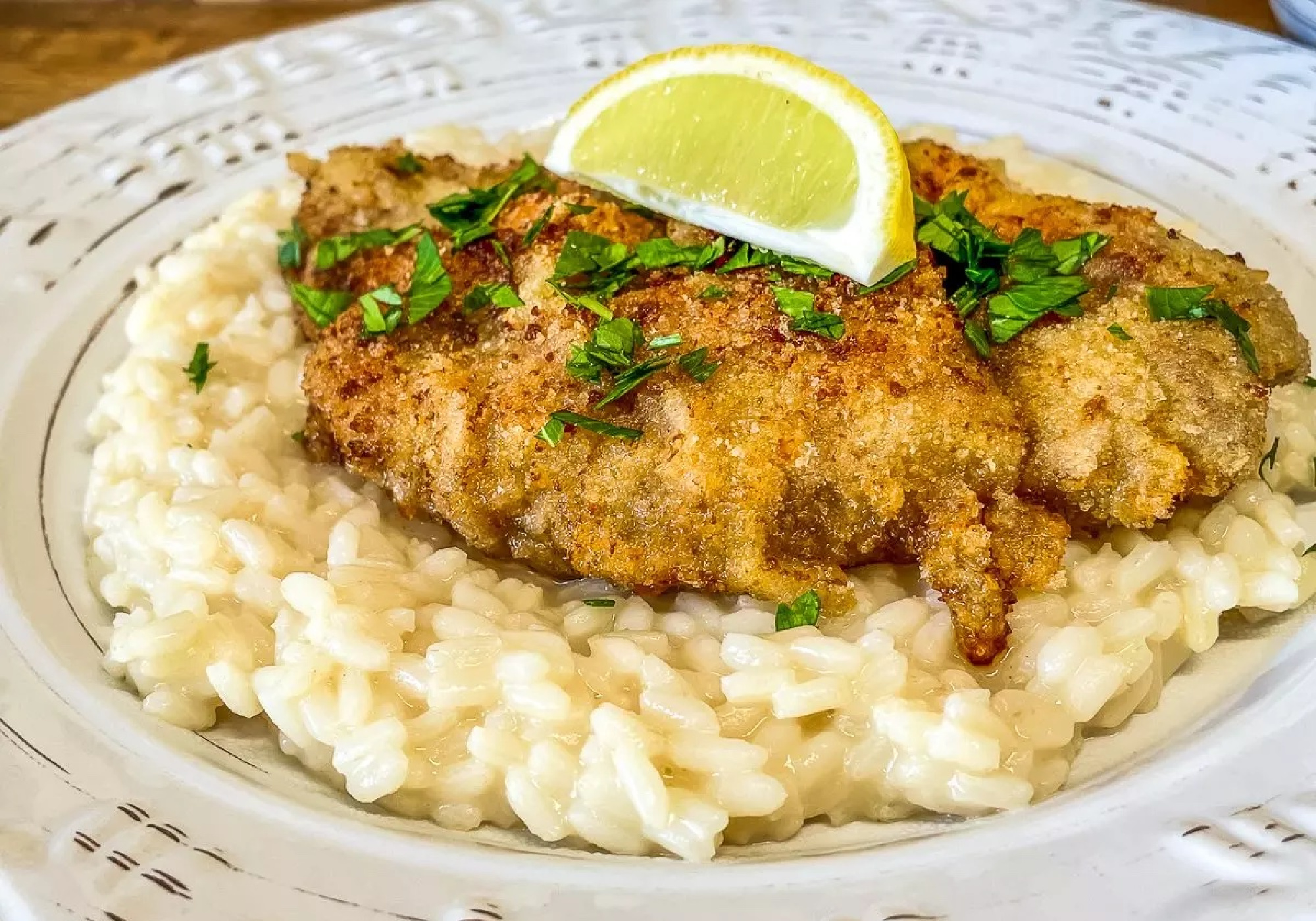
Michael Pendley is the man behind Realtree’s Timber 2 Table blog, where he publishes countless venison recipes just like this one for venison tenderloin Milanese. A staple in most restaurants, the Milanese preparation involves pounding cutlets, tenderloins, or other tender cuts (usually of chicken, pork, or veal) with a meat mallet before dredging and frying them. Here, Pendley uses venison tenderloins. He recommends serving the final product over risotto or pasta.
Ingredients
- 2 whole tenderloins, pounded flat
- ¾ cup breadcrumbs
- ¼ cup parmesan cheese
- 1 teaspoon Italian seasoning
- ½ cup all-purpose flour
- 2 large eggs, beaten with 1 tablespoon water
- Salt and pepper to taste
- ½ cup vegetable oil
- Lemon wedges, fresh parsley, and additional parmesan cheese for serving
Instructions
- Trim away any fat from the tenderloins. Pound the meat to about a ¼ inch thickness with a meat mallet. Season well on both sides with salt and pepper.
- Mix ¼ cup parmesan cheese and the Italian seasoning into the breadcrumbs in a shallow dish. Whisk the eggs with a tablespoon of water. Add the flour to a separate shallow dish. Heat the oil in a skillet over medium heat.
- Dredge the meat on all sides in the all-purpose flour. Next, dip the meat into the egg wash. Immediately dredge in the breadcrumb parmesan mixture.
- Gently lower the tenderloins into the hot oil, taking care not to splash oil from the pan. Fry for 3-5 minutes per side to desired doneness. Serve with pasta or risotto and a salad.
Wade Truong’s Sous Vide Herb-Crusted Venison Chops Recipe
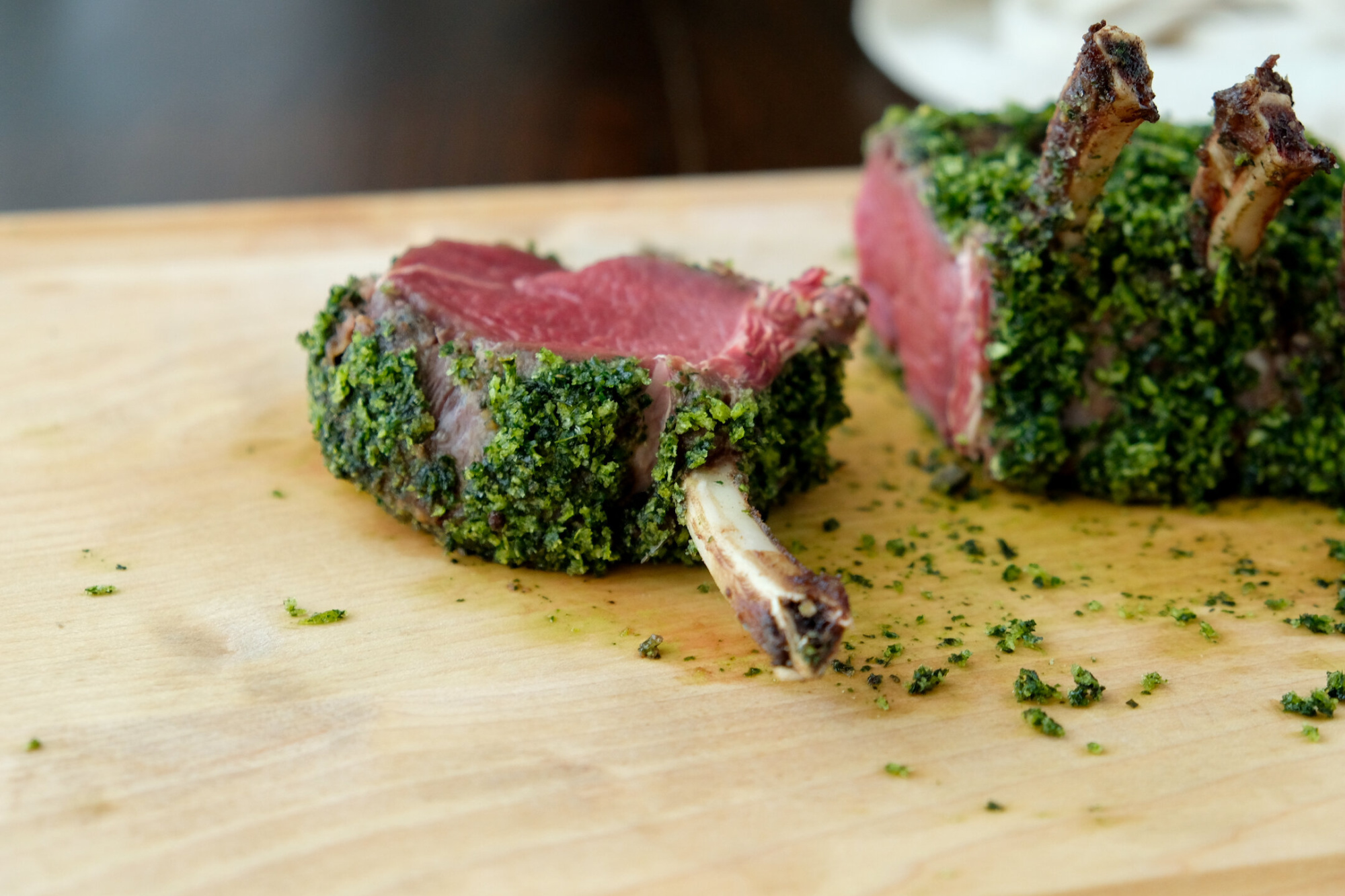
You can’t have a proper venison recipe round-up without a sous vide recipe. Here, Wade Truong of Elevated Wild uses his sous vide on an intermediate-level venison cut—the frenched rib rack—smothered in fried fresh herbs and breadcrumbs. The frenched rib chop is often called the “lollipop,” and involves cross-sections of the backstrap (exterior of the rib) still attached to the rib itself. If you don’t have a band saw, hand saw, or otherwise can’t extract a frenched rack of ribs, you can use this preparation on boneless backstraps and tenderloins as well, Truong says.
Ingredients
- 1 rack bone-in venison chops
- 1 ½ cup panko breadcrumbs
- 2 tablespoons butter
- 2-3 bunches of basil or flat leaf parsley (around ½ lb)
- All purpose flour, for dredging
- 1 egg
- ¼ cup milk
- Oil for frying
- Salt & pepper
- Butcher’s twine
Instructions
- Trim the chops of silver skin, extra fat, and french the bones. Use butcher twine to tie tight cylinders between each set of ribs. Season with salt and pepper, place in vacuum sealer bag with butter and seal. Cook in a sous vide bath at 130F for 1-2 hours.
- While the meat is cooking, pluck leaves from basil or parsley, or a combination of both (fry separately). Fry herb leaves in hot oil (at around 375F) until the leaves turn dark green and slightly translucent (15-30 seconds). Remove from oil and place on paper towel lined plate or pan to drain off oil. As the herbs cool they should become crispy and resemble dark green stained glass. Work in batches until all the herbs are fried.
- Place fried herbs in food processor with panko and pulse until the mixture is evenly dark green. Set aside.
- When the cook time for the chops is over, remove them from sous vide bath & place in ice bath to chill. Remove them from the bag & dredge in flour (avoiding getting flour on bones). Shake off any excess flour and sear in large sautee pan with oil until flour is a golden brown, about 30-40 seconds each side. Use tongs to rotate the chops to evenly sear all sides. Remove from pan and place on sheet pan to cool for 5-10 minutes.
- Preheat oven to 425F. Mix egg with milk and use a pastry brush to coat all sides of the chop (avoiding getting the egg wash on the bones). Once coated, place in bowl with herb panko and press the panko onto the chops, making sure to coat all sides evenly. Place on baking sheet or roasting pan and bake at 425F until panko is crispy and just starting to darken (~5 minutes). Remove from oven and allow to cool enough to handle. Cut the chops apart or serve the rack whole.
Jenny Nguyen Wheatley’s Vietnamese Shaking Venison Recipe
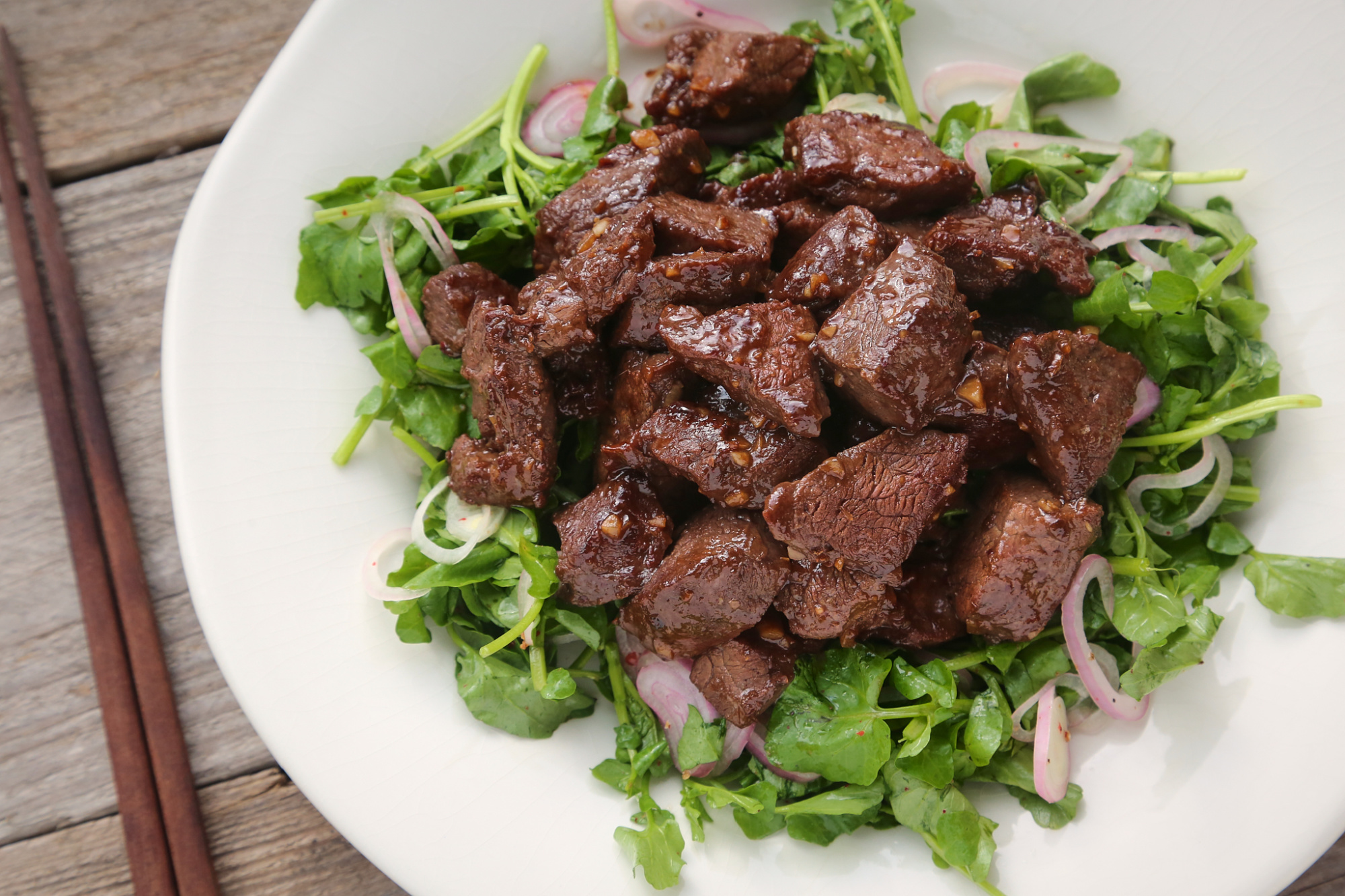
This fast-and-easy venison recipe is a childhood favorite for Jenny Nguyen-Wheatley of Food for Hunters. Wheatley is a hunting and wild foods writer and editor based in Omaha, Nebraska. She took a traditional Vietnamese beef recipe and swapped in venison, making the dish even leaner and more nutritious than it already was. If you can find farm-fresh veggies for the salad, all the better.
Ingredients
- 1 pound of venison loin or tender hindquarter roast
- 1 tablespoon of peanut/vegetable oil
- 2 servings of cooked jasmine rice, keep warm
Marinade:
- 1/2 teaspoon of freshly cracked black pepper
- 1 tablespoon of light-sodium soy sauce
- 1 teaspoon of fish sauce
- 2 tablespoons of oyster sauce
- 2 cloves of garlic, minced
- 1 1/2 teaspoons of sugar
Salad:
- 4 cups of watercress (only tender, leafy parts) or arugula
- 1 shallot, thinly sliced
- 1 1/2 tablespoons of rice vinegar
- 1 1/2 teaspoons of sugar
- Kosher salt, to taste
- 3-5 turns of freshly cracked pepper
- 2 tablespoons of water
Instructions
- Remove all silver skin from venison and cut into 3/4-inch cubes. In a small bowl, combine marinade ingredients. Then add venison and marinate, covered, for at least 20 minutes but no longer than 8 hours in the refrigerator.
- In a large bowl, combine all salad ingredients except the watercress/ arugula. Do not toss until ready to eat. Set aside.
- Next, heat oil in a large wok or skillet over high heat. Add venison cubes in one layer, and allow it to sear on this first side for 1 minute. Then shake the pan (or flip with tongs), to sear the other sides for 30 seconds each. Cook venison for about 4 minutes total or until nicely browned and medium-rare.
- Toss arugula or watercress into dressing. Add a pinch of salt and pepper, to taste.
- Move greens to a serving dish and pile cooked venison on top. Serve immediately with warm jasmine rice.
Beka Garris’ French Onion Venison Steaks Recipe
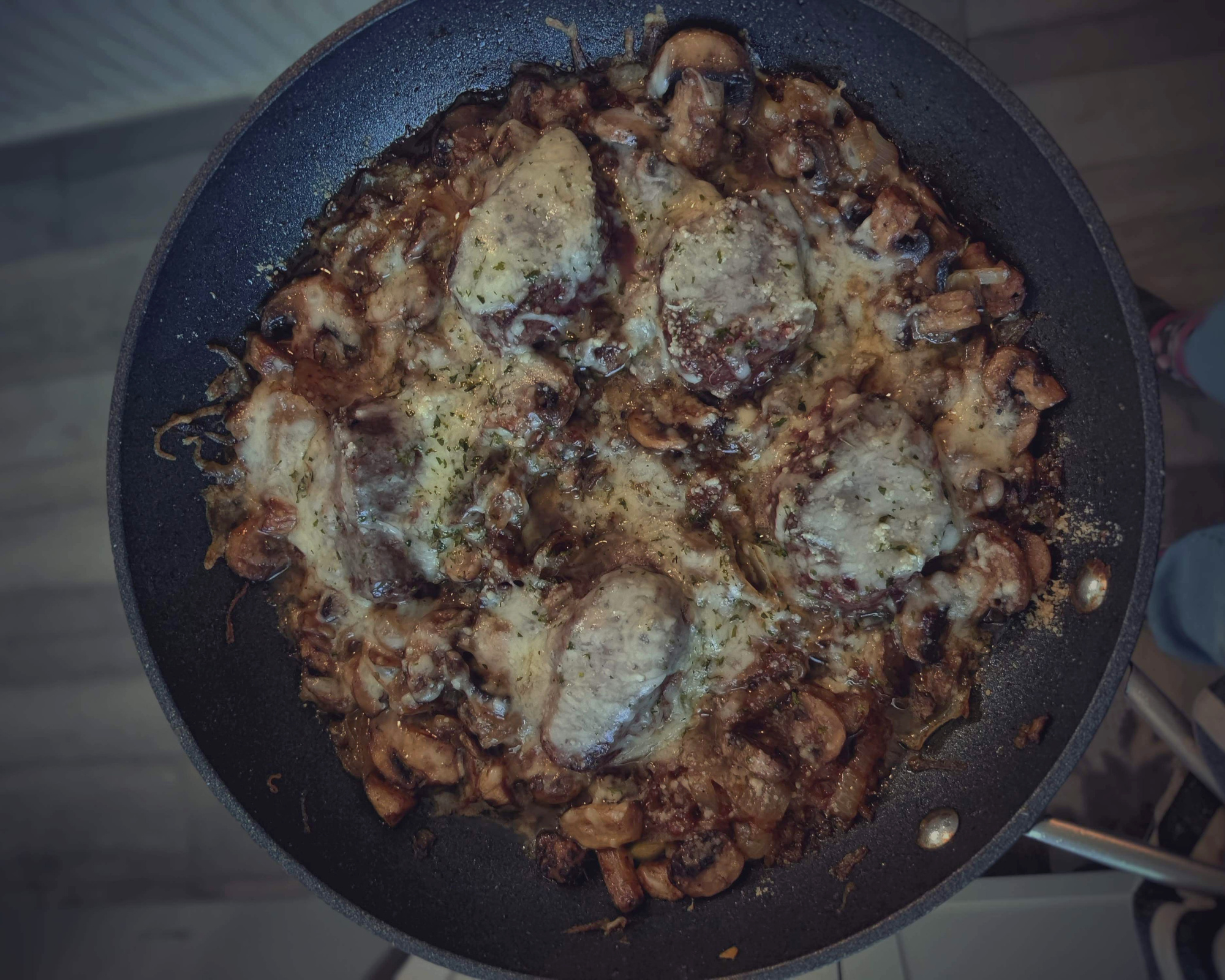
This venison recipe from bowhunter and wild foods enthusiast Beka Garris, which she originally published in Traditional Bowhunter, has winter comfort food written all over it. Unlike your standard French onion soup, the best part of this recipe is what’s hiding underneath the cheese. This is a great preparation for any tender steak cut, and it makes for a quick, satisfying weeknight dinner—especially if you’re cooking for picky kids. (You should also check out Garris’ venison schnitzel recipe.)
Ingredients
- 1/2 to 1 pound venison steak
- 2-4 onions
- 1 cup of beef, game, or bone broth
- Cooking oil
- Butter
- Salt and pepper
- Shredded mozzarella cheese
- Cast iron skillet
Instructions
- Cut venison steaks to 1.5-inch thick and season well with salt and pepper. (This would be a great recipe for a backstrap, which could be easily cut into symmetrical medallions. However, I was out of backstrap, so just used a steak cut from the hindquarter (round). The meat came out extremely tender!)
- Heat cast iron skillet over medium high and add a few tablespoons of oil. Add your steaks and let them cook a few minutes on each side. Don’t worry about cooking them through, just get a nice sear on both sides. Then, remove them from the skillet and set them on a plate.
- While the steaks are cooking, I usually use the time to slice my onions. You may have noticed that I didn’t specify which kind of onions to use, because they all work great with this recipe. I prefer red onions for the big flavor and “bite.” They’re also a larger onion, so I don’t need as many. If you prefer a more mellow flavor, I suggest a white or yellow onion. All are delicious! I use roughly one onion per person I plan to serve as a general rule of thumb.
- Slice the onions thin. Once the steaks are removed from the skillet, dump the onions into that same skillet over medium heat. Add your broth, 4 tablespoons of butter, and season well with salt and pepper. At this time, you should preheat your oven to 300 degrees.
- Let the onions cook down, stirring occasionally. It will take about 15-20 minutes
for the liquid to disappear and the onions to turn a beautiful caramelized color. - Place your cooked steaks back into the skillet and nestle them into the bed of cooked onions. Top the steaks with shredded mozzarella, being as heavy handed with the cheese as you like. There is no wrong answer there. Place the skillet into your preheated oven and let it cook for 20 minutes for medium rare, 23-24 for well done. Add some parmesan cheese and chopped parsley if desired. Serve with good French bread and don’t count on having a lot of leftovers!
Recipes from Hunters
These venison recipes come from OL editors and writers who have overcooked enough backstraps and dried out enough burgers to know what not to do with a full freezer. They might not have a Michelin star—heck, they might not even know how to pronounce “bourguignon”—but they can put a damn fine venison meal on the table with these recipes.
Derek Horner’s Shredded Venison Blade Roast Recipe
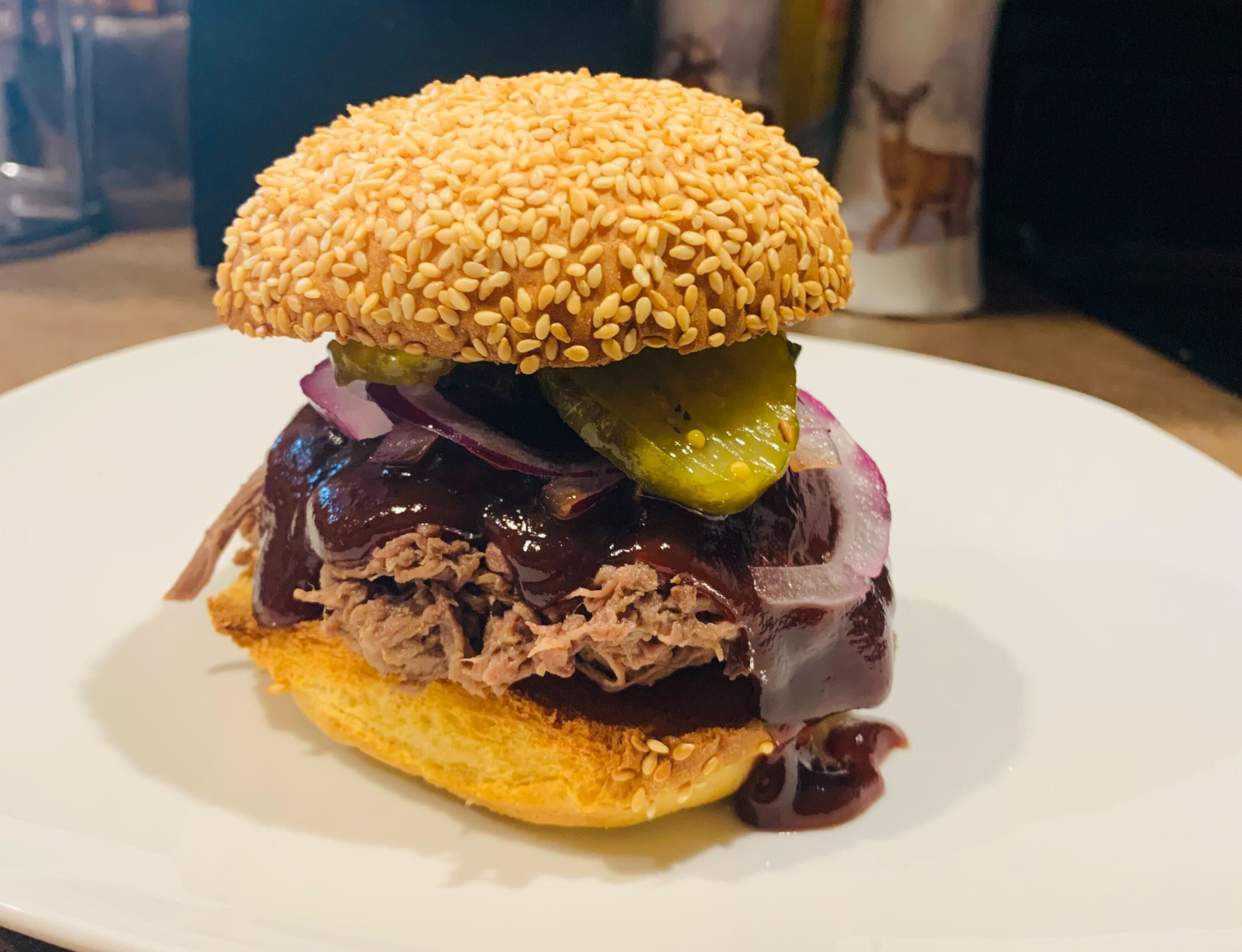
The shoulder blade can be a controversial topic in wild game cooking. Some prefer to trim all the meat off the blades and turn it into grind, flatiron steaks, or stew meat. Others, like OL’s engagement editor Derek Horner, prefer to leave the blade intact and cook the whole section down low and slow, resulting in a sumptuous pile of juicy, shredded venison.
Ingredients
- 1 venison blade roast
- ½ cup (or enough to coat the roast) high-smoke-point oil, like avocado or sunflower oil
- 2 tablespoons garlic powder
- 2 tablespoons onion powder
- 2 tablespoons paprika
- 2 tablespoons kosher salt
- ¼ cup brown sugar
- 1.5-2 quarts beef or venison stock, enough to cover the roast
- BBQ sauce of choice
Instructions
- Take your shoulder blade and cover it with high smoke point oil. Then add your seasonings.
- Bring a cast iron skillet to high heat, then sear the shoulder blade in the pan for 30-40 seconds each side. This will lock your seasonings into the meat.
- Remove from the cast iron skillet and insert into your crock pot. Fully cover the shoulder blade roast with beef stock (or homemade venison stock).
- Set the crock pot to cook on low for 6-8 hours until meat is fall-off-the bone-tender. You should be able to grab the shoulder blade with a set of tongs and see the meat slide off it.
- Remove the meat and bones from the crock pot and separate all of the meat from the bones. Put your meat into a metal bowl and shred with a fork, or you can use a kitchen mixer to simplify this process.
- Once the meat has been shredded, you’re ready to dig in. You can add BBQ sauce now, or later. Serve on a brioche bun for a perfect pulled venison sandwich, or add to a quesadilla if you want to mix it up.
The Author’s Harissa Lime Marinade Recipe
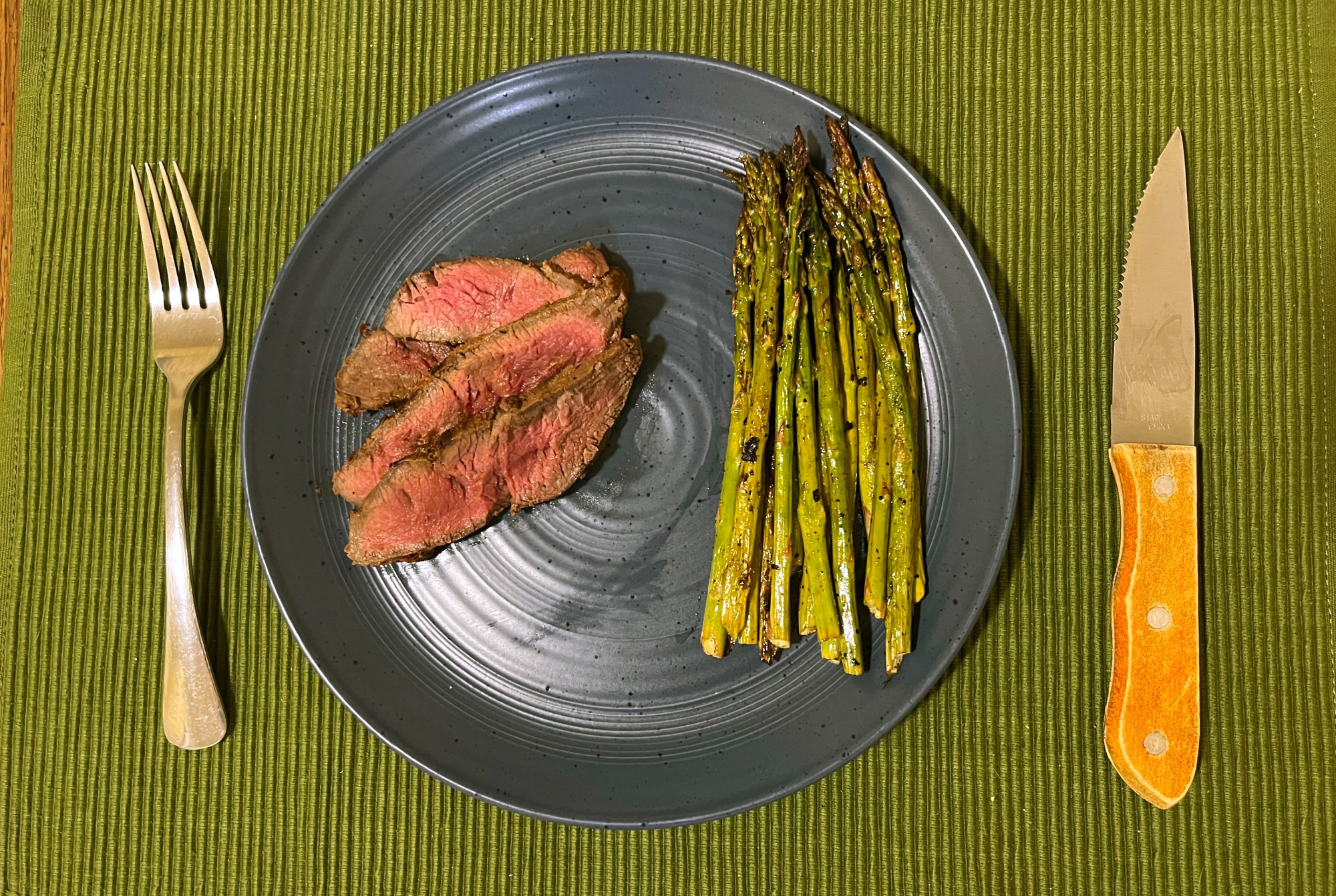
Harissa is a spicy North African pepper paste made from chili peppers and red peppers, garlic, coriander, cumin, caraway seeds, and a bunch of other herbs and spices. It’s unbeatable in a venison marinade because, if you buy the right brand, its ingredients do most of the seasoning work for you. (It’s similar to curry paste in this way, but offers a different flavor profile.) Before you start thinking “no way my small-town grocery store carries that,” you can find it in most international food aisles (try Walmart’s grocery section) or online. Consider ordering a dried spice blend version rather than the oily paste that could get messy while shipping.
Ingredients
- 2 tablespoons harissa paste or spice blend*
- 3 tablespoons lime juice
- 2 tablespoons toasted sesame oil
- 1 teaspoon garlic powder*
- 1 teaspoon cumin*
- 1 teaspoon salt, or to taste
*Not all harissa pastes and blends are the same. Check the ingredients list on the jars in your grocery store. If your only options don’t include these spices, add them to taste. I use Trader Joe’s Harissa Paste and add extra garlic powder and cumin.
Instructions
- Combine all ingredients in a Pyrex mixing cup and whisk until all ingredients are evenly distributed.
- Taste and adjust as needed. Remember this is a marinade, so it’s meant to pack a punch. Too much lime? Add a little extra cumin and salt. Too salty or spicy? Add another teaspoon or two of toasted sesame oil.
- Pour into gallon Ziploc bag or vacuum-seal bag and add preferred venison cut. Smother, remove as much air as possible, and seal. Store in refrigerator until ready to cook, up to 24 hours.
- Throw tender cuts on a hot grill or skillet for a fast sear and serve medium-rare.
Cosmo Genova’s Venison Ragu Recipe
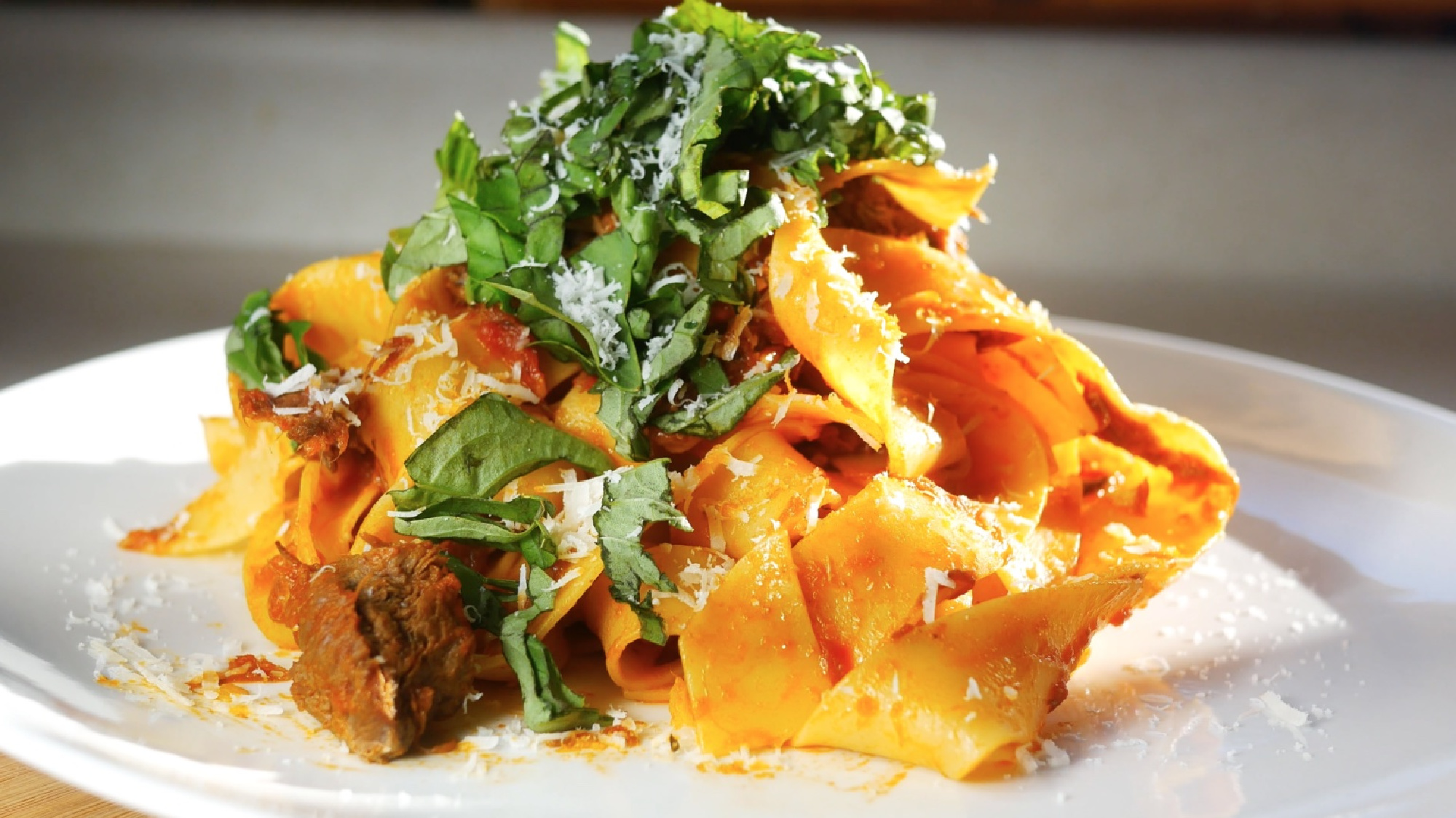
Cosmo Genova is a freelance writer and photographer who has contributed multiple recipes to OL. His restaurant background and passion for wild game cooking comes through in this recipe for venison ragu. There’s so much more to neck roasts than ground burger. It’s some of the finest-tasting meat on the animal if you give it time and moisture. Venison ragu is go-to recipe for neck roast, cooked down into a hearty base sauce of tomato, garlic, and wine. Served with your favorite pasta, you can make a restaurant-quality meal at home with your wild game and a few things from the pantry. Not only is it delicious, but it’s also a great dish to introduce people to wild game. You can also use any other roast for this recipe, but Genova prefers the neck. See the video for this recipe here.
Ingredients
- 1 whole venison neck cut in two
- 2 – 28 oz cans of crushed tomatoes
- 1-2 heads of garlic, minced
- 1 cup red or white wine
- Fresh basil and/or parsley
- Kosher salt, pepper, oregano, cinnamon or nutmeg
- Olive oil
- Pasta (here, pappardelle)
Instructions
- Roast the neck in an oiled baking dish covered with foil for at least 4 hours at 300°.
- Strip the meat off the bone and reserve along with the cooking liquid.
- Brown your garlic in a large dutch oven or stock pot using olive oil.
- Add the meat, followed by the cooking liquid
- Cook down for a few minutes, and then add the crushed tomatoes, wine, herbs, and seasoning.
- Stir all together, cover, and cook down for at least an hour (the longer, the better), stirring occasionally.
- Cook your favorite pasta to just before “al dente,” and drain
- Cook down a few scoops of the ragu in a saute pan, and then add your pasta.
- Cook the sauce into the pasta for a minute or two, and serve with grated cheese and more fresh herbs.
Natalie Krebs’ Perfect Venison Burger Recipe
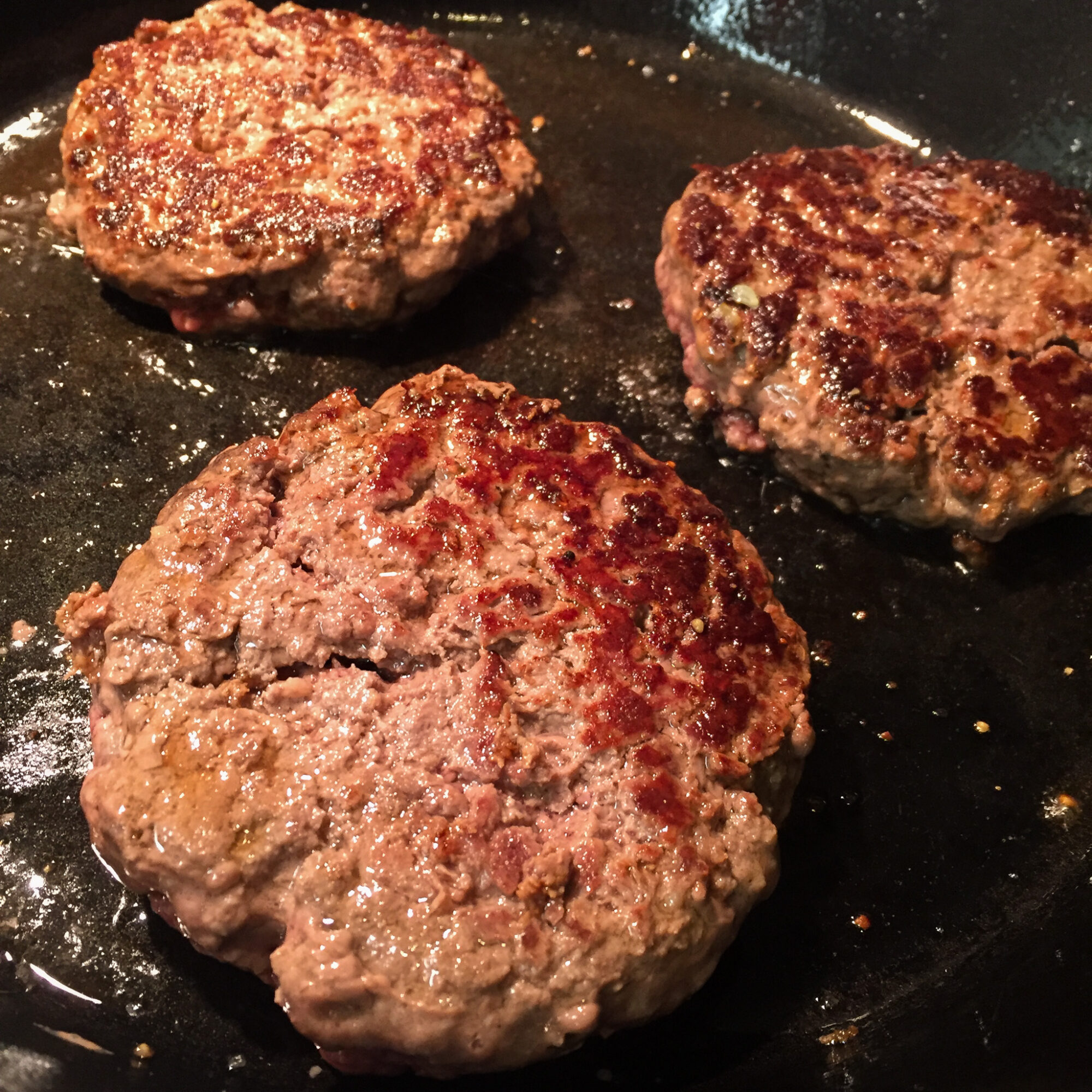
One of the quickest, easiest, and tastiest ways to cook ground venison is to make burgers, and OL executive editor Natalie Krebs’ burger should be everyone’s go-to. Because this recipe uses a cast-iron skillet instead of a grill, you don’t need to wait for good BBQ weather, either. Krebs finds that venison burgers have a tendency to crumble and fall through the cracks on a grill, especially if you haven’t cooked with venison much. The more fat there is in your burger meat, the less likely this will be a problem.
I grind my own venison burger with pork fat using a ratio of about 90 percent venison to 10 percent pork fat, but any similar ratio works fine. If you don’t have any fat in your venison, don’t worry. We’ll cover that in a minute.
Pro tip: When it comes to venison burgers, I prefer to make smaller patties (4 to 6 ounces). They tend not to fall apart as easily, and you can get more caramelization if you smash the patty slightly with a spatula when it hits the skillet. Simply stack a couple on a big hamburger bun or make as many sliders as you want.
Ingredients
- Ground venison
- Cast-iron skillet or griddle
- Canola or peanut oil
- Egg (optional)
- Coarse salt (kosher, sea salt)
- Pepper
- Cheese
- Buns and other fixings
Instructions
- Defrost your ground venison ahead of time. Be sure to let the meat come to room temperature (or close to it) before cooking. If you throw cold burger meat on a sizzling skillet, the outside of the burger will caramelize and finish cooking while the center stays cold and, on bigger patties, truly raw.
- Form your patties. If you’re using 100-percent venison that has no additional fat incorporated, consider cracking an egg into the meat and mixing it by hand before forming the patty. This will 1) add fat to the lean venison and 2) help bind the burger so it doesn’t fall apart while cooking. If your venison already has fat incorporated, skip the egg and just shape your patties. Lightly press your thumb into the center of each patty once formed. This relieves surface tension while cooking and keeps your patties from swelling into balls of meat that cook unevenly and are difficult to eat on a bun.
- Heat your cast iron skillet so it gets ripping hot and add a neutral oil with a high smoke point, like canola oil or peanut oil. (Olive oil works in a pinch, but it’ll make your kitchen smokey.)
- Sprinkle the patties with coarse salt and pepper just before you put them in the skillet. If you salt them too soon (five minutes or more) the salt will start to draw moisture out of the burger and make them less juicy.
- Put your room-temp, freshly-salted patties in the skillet. They should sizzle when they hit the oil. Don’t let the burgers touch (cook in batches if necessary) and cook for 3 to 5 minutes on one side, flipping when the bottom is evenly carmelized.
- As soon as you flip the patties, top them with cheese of your choice and cook them for half as long as the first side. (I recommend goat cheese.) The goal is to cook the patties medium-rare, end stop. A medium or medium-well beef burger may be palatable to you, but any venison burger that hits “medium” or beyond will taste dry and overcooked. Now is also a good time to toast the buns.
- Slip the burgers out of the skillet and onto a plate to rest for just a few minutes (five is plenty). Tent the burgers with tin foil to keep them warm. You can skip this step if you’re impatient, but your bun is going to get soggy.
- Build your burger—toasted bun, burger with cheese, pickles, lettuce, tomato, onion, sauce(s) of your choosing—and enjoy.
Read Next: Best Smokers
More Venison Recipes We Love
Here are some of the best recipes from the OL archives:
- Osso Bucco and Gremolata
- Venison Jerky
- Smoked Venison Ham
- The Ultimate Venison Burger
- Venison Tamales
- Pepper Steak Stir Fry
- Smoked Venison Poutine
- Tenderloin Yaki Udon
- Ground Venison and Wild Mushroom Egg Rolls
Venison FAQs
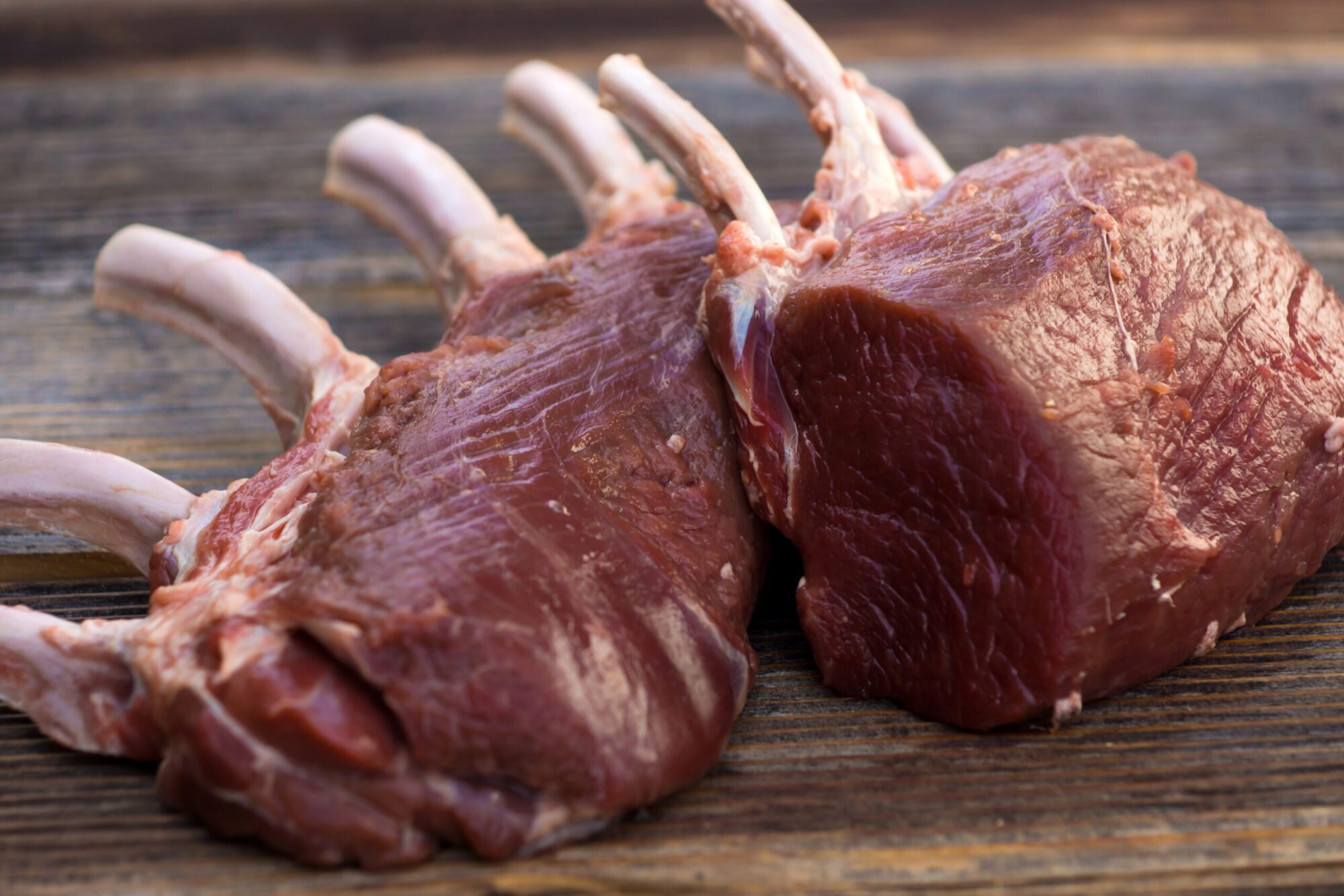
Yes and no. Unlike beef, venison has very little fat, which means it isn’t as marbled throughout as a beef steak might be. But certain cuts of venison—-the backstraps, tenderloins, and even some parts of the hind quarter—are just as tender as any cut of beef, as long as you don’t overcook the meat.
Yes. Many venison aficionados would argue that’s the only way to eat it. For the best flavor and texture, don’t let any muscle cuts get above medium. Remember—when you cut into that venison steak, it’s the first time that meat has ever been exposed to the atmosphere around it, which means it’s perfectly safe to eat.
The speed that you cook venison depends on the cut. If you have a piece of meat with lots of connective tissue, silver skin, and maybe even a bone or two still attached, a low-and-slow preparation is best. This gives all that extra tissue time to break down and enrich the meat. But with a pure muscle cut like a backstrap or tenderloin medallion, a fast and hot sear will ensure the interior meat stays medium rare but the exterior develops a satisfying crust.
Read Next: What Temperature Should You Cook Venison?
Final Thoughts on Venison Recipes
There are a million recipes for just about every cut of venison, although the best ways to cook venison are always under contention. It’s easy to fall into the rhythm of doing the same thing every time, but finding new and interesting venison recipes is a great way to reinvigorate your family’s love of wild game, whether it’s something as easy as a different marinade or a technique that requires a new culinary tool. Happy eating.

